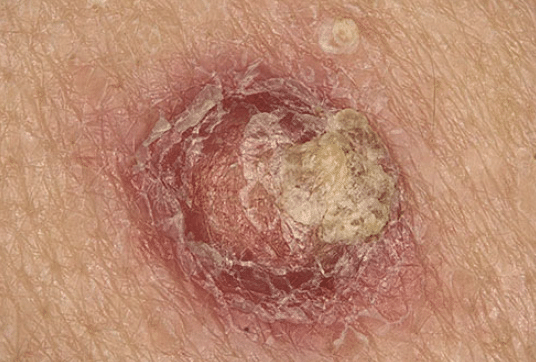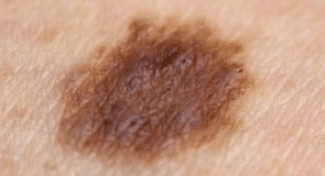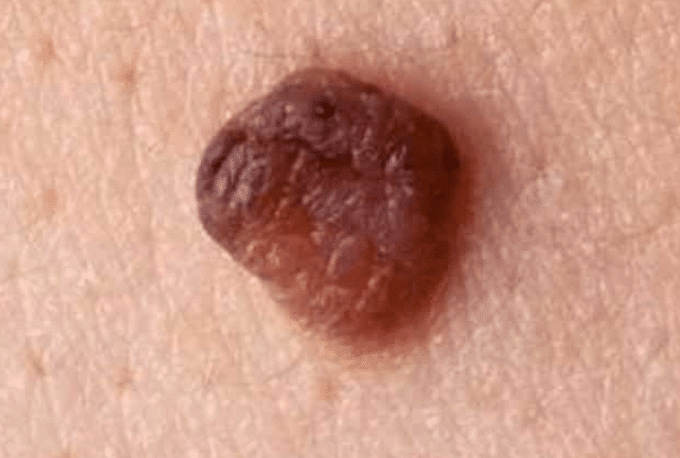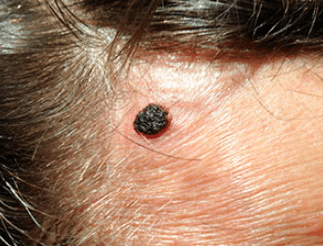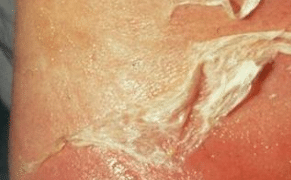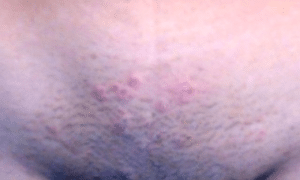How can you tell if a mole is cancerous? Why do my mole itch and hurt? Is itchy skin a sign of skin cancer? What does a cancerous mole look like? Get more insight about the cause’s itchiness on moles, advice on moles, moles on face, back, arm, and remedies.
Moles Itchiness
Moles on the skin refer to lesions that are colored and are found on the skin of the body or mucous membrane. According to recent research, mole cells on the skin occur in a cluster instead of spreading out.
Mole cells are known as melanocytes and are basically known for producing skin pigments. Therefore, moles are long lasting since they are found on an individual skin for the rest of the life. Melanocytes cells determine the skin pigment of a person.
According to WebMD, moles are of different types such that there are some moles that are grouped according to the origin congenital moles are those that exist at birth as birthmarks while acquired moles develop later after birth.
In addition, there are some moles that are classified as normal moles, atypical moles or cancerous moles (malignant melanoma) in terms of their appearance and characteristics.
Recent studies show that moles are of different colors but most of them are black, brown and pink. The texture and appearance of these moles also vary since there are some moles that are smooth in texture while others are rough meaning they can become itchy.
Moles are marked by being flat on the skin or raised on the skin surface. Most moles are usually confused with skin tags and freckles or warts, which may also be itchy.
Itchy Mole Causes
During the growth of the moles on the skin, a person may notice some weird changes on the skin surrounding the mole such as the skin becoming red, moles becoming scaly, itchy and the skin peeling off. In cases, the mole may increase in size and also become itchy.
According to the recent research done by a group of dermatologists, moles undergo various changes that make them become itchy. Also, most of the changes are said to be harmless while some other symptoms could be that of skin cancer that is dangerous.
It is recommended to consult the dermatologist in the instance where the moles on the skin are itchy and bleeds. Some of the possible causes of itchiness on moles on the skin include the following:
- Irritated Cancerous Cells
The growth of cancer cells in the skin can cause irritation of the nerve endings in the moles and in the process an individual will experience itchiness on moles. Once the growth of cancer cells is determined, it is recommended to consult a specialist for treatment.
Also, it is recommended to take note of the factors that result in itchiness of the moles such as sunlight or drugs that change hormonal function. Recent studies show that these factors only escalate the condition but cancer cells are the main cause.
- Eczema and Dermatitis
Individuals who suffer from eczema and dermatitis usually experience itchiness on the moles. Irritation of the moles due to this condition is said to be normal and it could not be considered to be a sign of skin cancer.
- Allergic reactions
There are numerous skin allergies that can stimulate itching sensation on the moles. Sometimes, this effect cannot be an indication of skin melanoma; it does not rule it out. When the skin condition happens on a regular basis, it is recommended to consult a medical professional for test and treatment.
- Ultraviolet Radiation
Itchy mole due to UV rays from the sun usually happens when an individual has been exposed to it for a long period of time. Although the rays are important for the body as it provides it with vitamin D and keeps it warm, it can also be dangerous due to high dosage.
Also, overexposure to the sunlight can result in some severe skin burn due to this harmful radiation. Again, individual with moles on the skin will experience moles undergoing some changes due to excess ultraviolet radiation.
The moles will begin growing in size, changing the color and becoming inflamed. The most commonly affected moles include moles on your scalp, moles on your face and moles on your neck.
- Physical Impact
The individual with moles on the skin and are subjected to body massage or strong impact, are likely to be triggered to become itchy. These factors interfere with the texture and structure of the moles hence resulting in an itching effect.
The interference will result in various changes in the moles such as reddening, inflammation, and bleeding. Any form of irritation on the skin can trigger itchiness on the skin around the mole.
People with moles on the chest or back usually experience pain, inflammation, and itching on the moles after thorough chest and back massage. Any damage on the moles due to pressure applied on it could result in itchiness.
- Hormonal Changes
There are several reasons behind hormonal changes ranging from physiological to environmental changes. The hormonal changes are quite common among women during pregnancies, menstruation, and menopause. Even stress, although it is not a major factor it can trigger hormonal imbalances in the body.
The hormonal imbalances can result in many changes in the body such as itchiness on the moles that have already grown on the skin. The changes also distract the physiological process of the moles causing it to become inflamed and have itching sensation.
- The side effect of some medicines
Some drugs have the certain side effect of which some can result in itchiness of the moles since they are hormonal drugs. In case an individual experience some itchiness on the moles after taking some hormonal drugs should consult a specialist for some change of the drugs.
The existence of the hormones in the drug that is induced in the body could trigger some physiological changes in the mole which results in itching sensation on the moles and the surrounding skin.
- Small body injuries
When moles are rubbed, it could result in small injuries that irritate the mole and trigger some itching sensation on both the moles and the surrounding skin. Also, mild rubbing form the cloths or ornaments such as necklaces and bangles could result in irritation on the mole.
Moles that are found between the inner thighs could also experience skin to skin rubbing and in the process, could have resulted in irritation of the moles leading to itchiness. Also, moles that are located in the skin folds may also itch due to the skin to skin friction.
Depending on the structure of the moles, the research shows that raised moles tend to experience rubbing more than flat moles due to their physical disposition. Therefore, raised moles are more likely to become irritated and itchy that flat moles.
Does an Itchy Mole Always Mean Cancer/ Is an Itchy Mole Always Cancer
Melanoma or malignant melanoma on the skin is associated with the itchiness of the growth like moles. Melanoma or malignant melanoma is the medical terms used to refer to a type of skin cancer that is accompanied by the development of moles on the skin.
Most moles that develop into skin cancer are cancerous in nature and melanoma is one of the forms of these moles that are considered to be a dangerous type of skin cancer.
Itchiness of moles that is said to be a sign of melanoma is also accompanied by other signs and symptoms. All this symptoms and signs are combined to bring out a unique characteristic known as the ABCDEs of Melanoma.
When the cancerous moles are discovered at an early stage, they are treatable and manageable. Therefore, it is recommended to examine the moles and identify some changes on it. In instances where the itchiness is extreme, it is important to consult a specialist.
The ABCDEs of Melanoma
According to the studies undertaken by a group of dermatologists, they came up with ABCDEs initials to enable people to understand and remember the characteristics of a suspicious or cancerous mole. The properties of itchiness of the mole stand out in the ABCDEs of melanoma in the Evolving part of the features.
The following chronology will enable an individual to understand well the meaning of ABCDEs melanoma and its characteristics. The initials include;
A indicates Asymmetrical. Common moles or freckles are completely symmetrical. This implies that asymmetrical moles do not have equal halves when a line is drawn through them. In cases of skin cancer, moles will not look the same on both sides.
B indicates Border. The borders of cancerous moles are irregular, jagged or blurry. But for non-cancerous moles, they are regular and the edges are smooth.
C indicates Color. Cancerous moles have the ability to change color with time as they grow on the skin. Most form of these moles is characterized by some multiple color change that is dynamic. For common moles, they have a color that does not undergo some changes.
D indicates Diameter. Abnormal moles on the skin tend to have a larger diameter than the common mole ad this will indicate a form of a cancerous mole. Individuals with this form of moles should consider it being checked to detect any form of cancer.
E indicates Evolution. This refers to any changes in the symmetry, borders, colors, and diameter of an existing mole. The mole is said to be evolving if, for example, it grows, changes in shape or changes in color. In addition, if the mole becomes irritated, itchy, inflamed or painful, it is considered to be evolving. A bleeding mole is also considered to be part of evolving, especially when this starts occurring when it was not the case before.
Itchy Mole Advice
The best way to have a solution to the common moles on the skin, it is to have them removed or treated if necessary. For unexpected reasons or problems in future such as the formation of melanoma, it is worth treating them at an early stage to avoid a problem such as itching, bleeding, inflammation, and pain.
It is also recommended to keep watching the mole on the skin even if they look normal to notice any form of change. It is also important to let moles be examined by a specialist immediately you notice something suspicious to avoid possible serious health problems like cancer by undergoing a mole biopsy in addition to physical examinations.
According to the recent research, normal moles have become cancerous with time and that is the reasons as to why it is recommended to undergo prognosis of the mole in order to determine the possibility of it becoming cancerous later.
Cancerous moles should be removed at an early stage before it develops into a serious form of cancer. This way, the removal and treatment of such a mole will very easy, less painful, less dangerous and far inexpensive.
Itchy Moles on Face, Neck, Scalp, and Legs
Moles that are itchy and are found on the face, neck, legs and partly on the breast are mostly said to be caused by excess exposure to ultraviolet rays from the sun. These moles do appear since most of these parts of the body are mostly exposed to the sunlight.
As per the recent research, these moles are said to be triggered by irritation to result in itching sensation. On the other hand, as in any other parts of the body, itchiness of the moles on these areas may be caused by other factors.
Itchy Mole on Back, Breast, and Chest
Having moles on the back, chest, and breast is quite common since the main cause of moles on these parts is again ultraviolet radiation sunlight. The condition is quite common among those individuals who like going for sunbathing and lie down with their backs or stomach facing the sky.
However, any form of itchiness sensation on the moles could be due to the other causes such micro-injury and drug side effects.it is recommended to visit a specialist for further treatment.
Mole Itches Sometimes
In most occasions, moles that are said to be itchy do not result in itchy sensation frequently. Probably, the itching sensation is stimulated by a change of environment. So, an individual with a mole that itches sometimes should identify the environmental changes that could be resulting in the itchiness.
For example, as we have seen above, ultraviolet radiation could be one of the causes of itchy moles. So, exposing the moles on the sun could trigger itching on the mole.
Itchy Mole on Back Pictures
Can itchy moles be harmless? The answer is yes. Those typical or common moles can be harmless as compared to melanoma which is considered to be a dangerous form of cancer. Therefore, most images or pictures in the article bring out various types of moles and their symptoms.
Therefore, have a look at the pictures and learned to differentiate between cancerous moles that are itchy and common moles that are also itchy. Make sure to monitor all the types of moles on the skin and visit a dermatologist for advice.
Itchy Mole not Cancer
Does an itchy mole always mean cancer? Not really since there are some moles that are harmless according to the recent studies. This could be possible since for a mole to bring out all the signs and symptoms that are aligned to cancerous moles like itching and change in colors, and then it is not cancer.
Those moles that do not portray the features of cancerous moles are said to an atypical mole or dysplastic mole or abnormal mole. Most of these moles that are common do not need any medical care since they do not pose a serious health problem.
It is recommended for a person with a typical mole to undergo a biopsy in order to detect any form of cancer. As from the medical research, a mole develops into cancer; it happens gradually and might take place over weeks or months.
It is also commendable to monitor any changes in the moles in order to determine any form of cancer and take precautionary measures to avert the dangerous consequences of melanoma.
Itchy Mole Remedy
Most moles do not need treatment but in case they cause a lot of discomfort through itching, it is recommended to visit a dermatologist for removal. Some of the common methods for removal of moles include:
- Surgical excision
A bothersome mole can be removed through the surgical process. This is a straightforward surgery technique that your dermatologist can do on you as an out-quiet. It is very prudent that this technique is completed by a dermatologist or qualified general specialist.
This is on the grounds that the specialist will professionally inspect it before the method to evade any wellbeing related issues. Likewise, if this surgery is completed professionally, you will keep away from conceivable mole evacuation contaminations.
Amid the system, the specialist will initially clean the mole and the encompassing skin to take out microscopic organisms and germs. The subsequent stage will be too numb the region utilizing an infusion or a suitable nearby anesthesia.
Whenever prepared, the specialist will etch or shave the mole utilizing a clean surgical tool or scissors. Amid the strategy, level moles are etched while raised moles are shaved. At last, the dermatologist will apply a suitable clean on the zone and wrap it with gauze to quit draining and keep off germs.
- Laser Mole Removal
Laser mole evacuation uses concentrated light to expel the mole. As the preference, the light emission utilized as a part of laser mole expulsion can be set to particular wavelengths. This permits centering it into intense light emissions that can even cut a metal bar.
By concentrating on a little territory, the specialist to complete the system at an abnormal state of accuracy. This light emission is utilized to expel the mole. Because of the high accuracy level, laser mole evacuation involves insignificant harm to the encompassing skin.
However, there are instances where an individual would wish to use the following home remedies to get rid of the moles permanently. Some of the home remedies include:
- Garlic
The remedy contains certain enzymes that help to break down cell clusters that make these moles. The enzymes inhibit cells from spreading out but instead loosen them up by breaking the bond. During the process, the garlic juice lightens up the mole by reducing the pigment.
- Apple Cider Vinegar
The content of the apple cider vinegar is not only used to get rid of moles but also is a remedy for other unsightly skin lesions like skin tags and warts. The content of the vinegar includes; malic acid, tartaric acid and many other acids that are known for dissolving the moles completely.
- Pineapple Juice
It contains enzymes and citric acid that are used to lighten the pigmentation of the moles and in the process makes them less visible.
- Castor Oil and Baking Soda
Since castor oil is a discutient in nature, it helps to remove warts, moles, and skin tags by dissolving and eliminating these unusual skin growths. This remedy takes some time to show results but it doesn’t leave scars on your skin.
- Dandelion Root
It contains a milky sticky resin that helps to remove the moles. The method has been used during the ancient time and has been proven to work.
- Onion Juice
This home remedy works best as garlic since it also contains some enzyme that helps to remove the moles by breaking down the bonds that hold up the cells together.
- Iodine
This element occurs naturally and when applied on the mole, it penetrates into the cells making up the mole and eradicates them completely.
- Frankincense Oil
It contains sesquiterpenes which stimulate brain to control emotions and also helps various hormonal glands apart from strengthening the immune system by increasing leukocyte activity. It is also said to have properties that are an excellent wart and mole removal.
FURTHER REFERENCES AND SOURCES
- What Could Cause an Itchy Mole? https://www.verywell.com/is-an-itchy-mole-a-symptom-of-skin-cancer-514380
- Itching mole: https://www.melanoma.org/find-support/patient-community/mpip-melanoma-patients-information-page/itching-mole-0
- Common Moles, Dysplastic Nevi, and Risk of Melanoma: https://www.cancer.gov/types/skin/moles-fact-sheet
- Effective Home Remedies for Moles: http://www.rapidhomeremedies.com/remedies-for-moles.html
- Skin Cancer, Melanoma – Symptoms: http://www.webmd.com/melanoma-skin-cancer/tc/skin-cancer-melanoma-symptoms#1
- Check for signs of skin cancer: http://www.cancer.org.au/preventing-cancer/sun-protection/check-for-signs-of-skin-cancer.html


